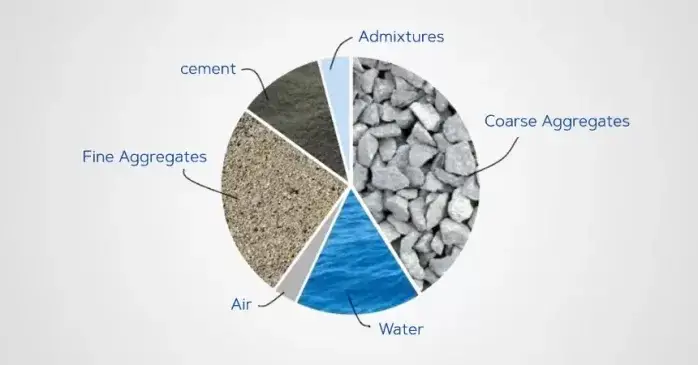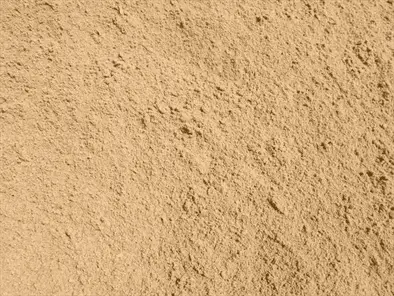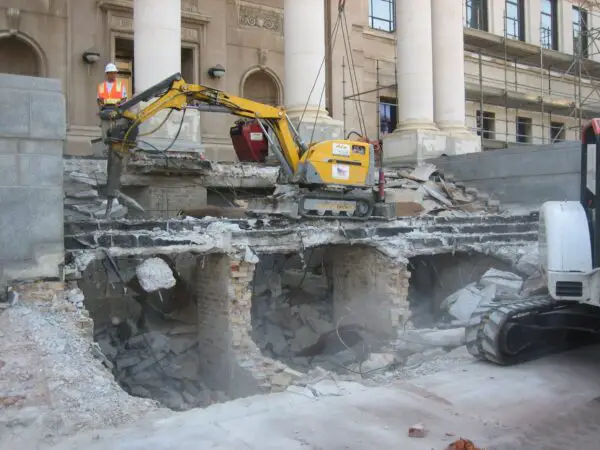A cement mix proportions is a combination of cement, sand, gravel, and water in specific proportions to create concrete.
The proportions of these ingredients determine the strength, durability, and workability of the resulting concrete. Proper cement mix proportions are crucial for ensuring the quality and performance of concrete in various civil engineering applications.
Types of Cement Mix
There are several types of cement mixes, each designed for specific purposes:
- Normal cement mix: Used for general construction purposes, such as buildings, pavements, and foundations.
- High-strength cement mix: Formulated to achieve higher compressive strength, suitable for high-rise structures and bridges.
- Rapid-hardening cement mix: Designed to gain strength quickly, ideal for urgent repairs and fast-track projects.
- Sulfate-resistant cement mix: Used in environments with high sulfate content to prevent deterioration.
What is the Standard Cement Mix Ratio for Concrete?
The standard cement mix ratio for concrete is 1:2:4 (cement:sand:gravel) by volume. This ratio provides a balance between strength, durability, and workability. However, the ratio can be adjusted based on specific project requirements and environmental conditions.

Recommended Water-Cement Ratio for Concrete Mix
The water-cement ratio is a critical factor in determining the strength and durability of concrete. A lower water-cement ratio leads to higher strength and durability.
The recommended water-cement ratio for most concrete mixes is between 0.4 and 0.6. However, this ratio may vary depending on the specific application and exposure conditions.
Formula for Cement Mix Proportions
The formula for calculating cement mix proportions is based on the desired strength and workability of the concrete. The basic formula is:
Cement = (Required Strength × Volume of Concrete) ÷ (Cement Strength × Cement Efficiency Factor)
Sand and gravel quantities are then determined based on the calculated cement content and the desired mix ratio.
Calculating Cement, Sand, and Gravel Mix Proportions
To calculate the proportions of cement, sand, and gravel for a specific volume of concrete, follow these steps:
- Determine the required strength and volume of concrete.
- Calculate the cement content using the formula mentioned above.
- Determine the sand and gravel quantities based on the desired mix ratio (e.g., 1:2:4).
- Adjust the proportions if necessary to achieve the desired workability and performance.
Typical Cement, Sand, and Aggregate Mix Ratio
A typical cement, sand, and aggregate mix ratio for general-purpose concrete is 1:2:3 (cement:sand:aggregate) by volume. This ratio provides a balance between strength, durability, and cost-effectiveness. However, the ratio can be adjusted based on specific project requirements and available materials.
Ideal Cement-Aggregate Ratio for Driveway Concrete
For driveway concrete, the ideal cement-aggregate ratio is 1:2:3 to 1:2:4 (cement:sand:gravel) by volume. This ratio provides sufficient strength to withstand the weight of vehicles while maintaining good workability for easy placement and finishing.
Standard Concrete Mix Ratio by Volume
The standard concrete mix ratio by volume is 1:2:4 (cement:sand:gravel). This ratio is widely used for general construction purposes and provides a balance between strength, durability, and workability. However, the ratio can be adjusted based on specific project requirements and environmental conditions.
Concrete Mix Design Calculations (Excel Sheet)
Concrete mix design calculations can be performed using an Excel sheet to determine the appropriate proportions of cement, sand, and gravel for a specific project. The Excel sheet takes into account factors such as required strength, cement type, aggregate properties, and environmental conditions to generate an optimized mix design.
What is the Perfect Concrete Mix Ratio?
The perfect concrete mix ratio depends on the specific application, required strength, and environmental conditions.
However, a common mix proportions for general-purpose concrete is 1:2:4 (cement:sand:gravel) by volume.
This ratio provides a balance between strength, durability, and workability. For high-strength applications, the ratio may be adjusted to increase the cement content and reduce the water-cement ratio.
Concrete Calculator to Calculate Cement Bags Needed
A concrete calculator can be used to determine the number of cement bags needed for a specific project based on the volume of concrete required and the desired mix ratio.
The calculator takes into account the cement bag size (usually 94 lbs or 42.5 kg) and the mix proportions to provide an accurate estimate of the cement bags required.
Cement mix proportions for Foundations?
For foundation concrete, the recommended aggregate-cement ratio is 1:3:6 (cement:sand:gravel) by volume.
This ratio provides sufficient strength and durability to support the weight of the structure and resist soil pressure. However, the ratio may be adjusted based on specific soil conditions and load requirements.
Conclusion
Understanding cement mix proportions is essential for ensuring the quality and performance of concrete in civil engineering projects.
The standard cement mix ratio of 1:2:4 (cement:sand:gravel) by volume provides a balance between strength, durability, and workability for general construction purposes.
However, the proportions can be adjusted based on specific project requirements, environmental conditions, and desired performance.
By using the appropriate cement mix proportions and following proper mixing and placement techniques, civil engineers can create concrete structures that are strong, durable, and long-lasting.





